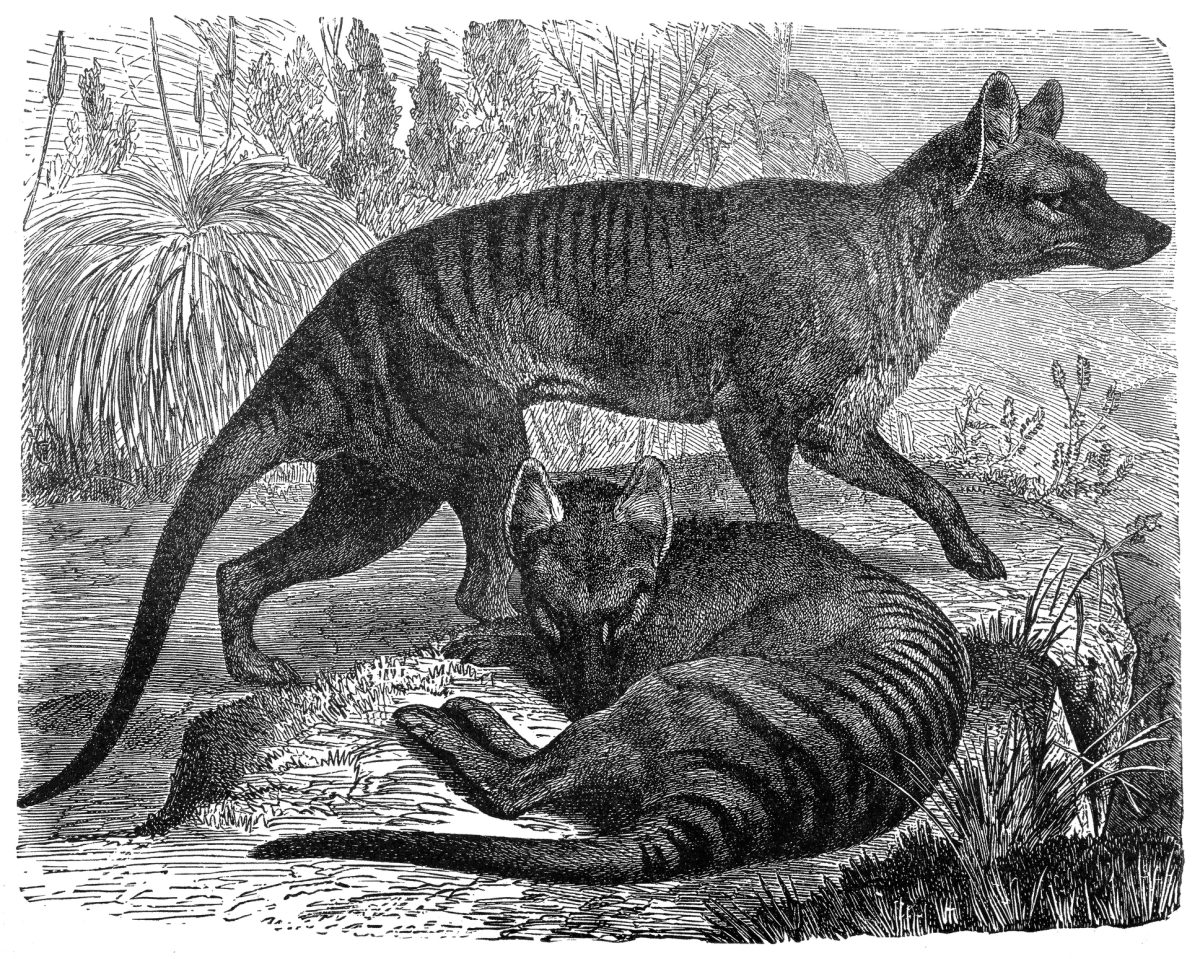The Tasmanian Tiger May Have a “Small Chance” of Survival
Posted on Categories Discover Magazine

The Tasmanian tiger was once a creature of great beauty. The striped, marsupial predator, and largest of its kind, moved at a slow, stiff-legged pace through the grasslands of Australia, hunting singly or in pairs. Its 46 teeth closed around kangaroos, other marsupials, small rodents and birds, according to the Australian Museum.
The Tasmanian Tiger Extinction
Largely a creature of the night, the Tasmanian tiger became a thing of legend as farmers blamed it for the death of sheep and poultry across the triangular island. Between 1888 and 1909, the Tasmanian government paid a British pound for each animal destroyed, wearing away at the species.
Beset by other troubles – stiff competition from dingoes and a distemper-like disease – the Tasmanian tiger went extinct, according to most authorities, including the International Union for the Conservation of Nature. But no one knows for sure when the last animal died in the wild, only when the last died in captivity, in 1936. Sightings of the sleek predator have continued into recent times.
Is the Tasmanian Tiger Extinct?
A new study that analyzes reams of data regarding tiger sightings has concluded that the tiger may have survived until the late 1980s to the early 2000s, with a “small chance” that the species yet lives in the remote southwestern area of the island.
The study relied on 1,237 sightings from 1910 onward and rated each sighting for quality and the likelihood that the person had spotted a real tiger. Higher quality records included confirmed kills and sightings by tiger hunters and trappers, wildlife professionals and experienced bushmen.
When relying only on such records, the analysis narrows the extinction range to some point between the 1940s and the 1970s.
Read more: What Animals Are Going Extinct?
Tasmanian Tiger Sightings
The study had no shortage of data: Bushmen sightings continued into the 1960s, and in 1982, a report by a National Parks officer set off an intense search for the tiger. The same year, the International Union for the Conservation of Nature declared the species extinct.
In more recent times, Tasmanian sightings have continued: In 2018, a tiger reportedly crossed a road in front of three bicyclists. And in 2019, a government biologist reported spotting the animal from about 100 feet away.
The sightings used in the study came from eclectic sources that included “official government archives, published reports, museum collections, newspaper articles, microfilm, contemporary correspondence, private collections, or other miscellaneous citations and testimony,” the paper says.
Read more: Northern White Rhinos Are Almost Gone. Should Scientists Bring Them Back?
Why Did the Tasmanian Tiger Go Extinct?
It estimates that the tiger died off first in the midland and southeastern areas of the island, where bounty hunting was heaviest. By 1937, the island’s population was greatly depleted, but concentrations persisted in the south-central and northwestern sections of the landscape.
Prior to British colonization, the island’s tigers had once numbered between 2,000 and 4,000. And earlier than that, they had lived on the Australian mainland, until about 3,200 years ago, according to a study that points to climate change, human hunting and dingo competition as possible reasons for tiger extirpation.
The study suggests we may never know for sure what happened to the Tasmanian tiger.
“The fate of the last wild individual of a species is rarely witnessed by people,” it says.
Read more: Scientists Might Bring Back These Extinct Animals